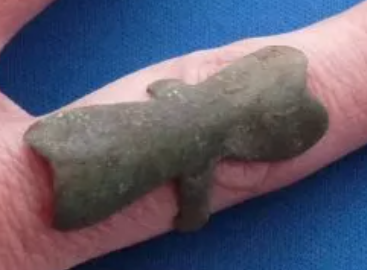Written by the TreasrueGuide for the exclusive use of the Treasure Beaches Report.
 |
| Source: GIN BOTTLES (cecilmunsey.com) |
A day or two ago I showed a recently found case gin bottle. While for me, it was an exciting find, there is little more I can say about the bottle. It was not embossed, so I doubt I'll find much more about it other than some approximated dating. It appears to be 19th century or later. I won't get into that any more now, but here is a little background information. The bottle is still in cleaning.
Below is the link.
 |
| Source: See link below. |
Here is an excerpt from a great chapter about Casper's whiskey.
CASPERS WHISKEY Final DRAFT.article (historicbottles.com)
---
OK, so we're going to get more sand in the Fort Pierce area. That will be 78% funded by the U.S. government and the rest by St. Lucie County. What is really getting pumped through the system is money - from the tax-paying citizens to the government with the government employees (IRS, USACE, St. Lucie and others) getting their cut, and then to those companies selected to do the job who support those who vote for the projects. MiracleGrow for government.
Thanks to DJ for sending the following USACE press release.
U.S. Army Corps of Engineers, Jacksonville District in partnership with the St. Lucie County Erosion District, will begin beach renourishment operations at Fort Pierce, Florida, on or about Thursday, March 9.USACE will place roughly 500,000 cubic yards of sand from authorized borrow areas off the coast of Fort Pierce Beach on approximately 1.3 miles of shoreline immediately south of Fort Pierce Inlet. Offloading of the sand will take place from inside the inlet’s south jetty. Operations are planned to be complete by mid-May.
The federal project strengthens shoreline resilience and reduces storm damages to residential and commercial infrastructure, critical transportation arteries, developed land and coastal armor and helps offset persistent coastal erosion impacts attributed to the inlet. It is 77.76 percent funded by the federal government and 22.24 percent funded by St. Lucie County.
Work will be under way 24 hours a day, seven days a week, including weekends and holidays until completion. All equipment will be lighted in compliance with U.S. Coast Guard requirements. USACE urges all boaters and navigators to exercise caution when transiting work areas and to consult local Notices to Mariners for any relevant updates.
Temporary restrictions to immediate work areas on the beach will be in effect while sand placement is under way. USACE thanks the public for respecting these requirements to ensure public safety.
For more information about Corps projects, please visit www.saj.usace.army.mil.
---
The inventor of the cell phone acknowledges the negatives. Below is what he said.
“My most negative opinion is we don’t have any privacy anymore because everything about us is now recorded someplace and accessible to somebody who has enough intense desire to get it,” the 94-year-old told The Associated Press at MWC, or Mobile World Congress, the world’s biggest wireless trade show where he was getting a lifetime award this week in Barcelona.
Here is the link.
Father of cellphone sees dark side but also hope in new tech | AP News
Don't think that has nothing to do with detecting or treasure hunting. There are the many positives, but also the negatives. We've heard about that locally this year.
---
 |
| Source: MagicSeaWeed.com. |
Good hunting,













































